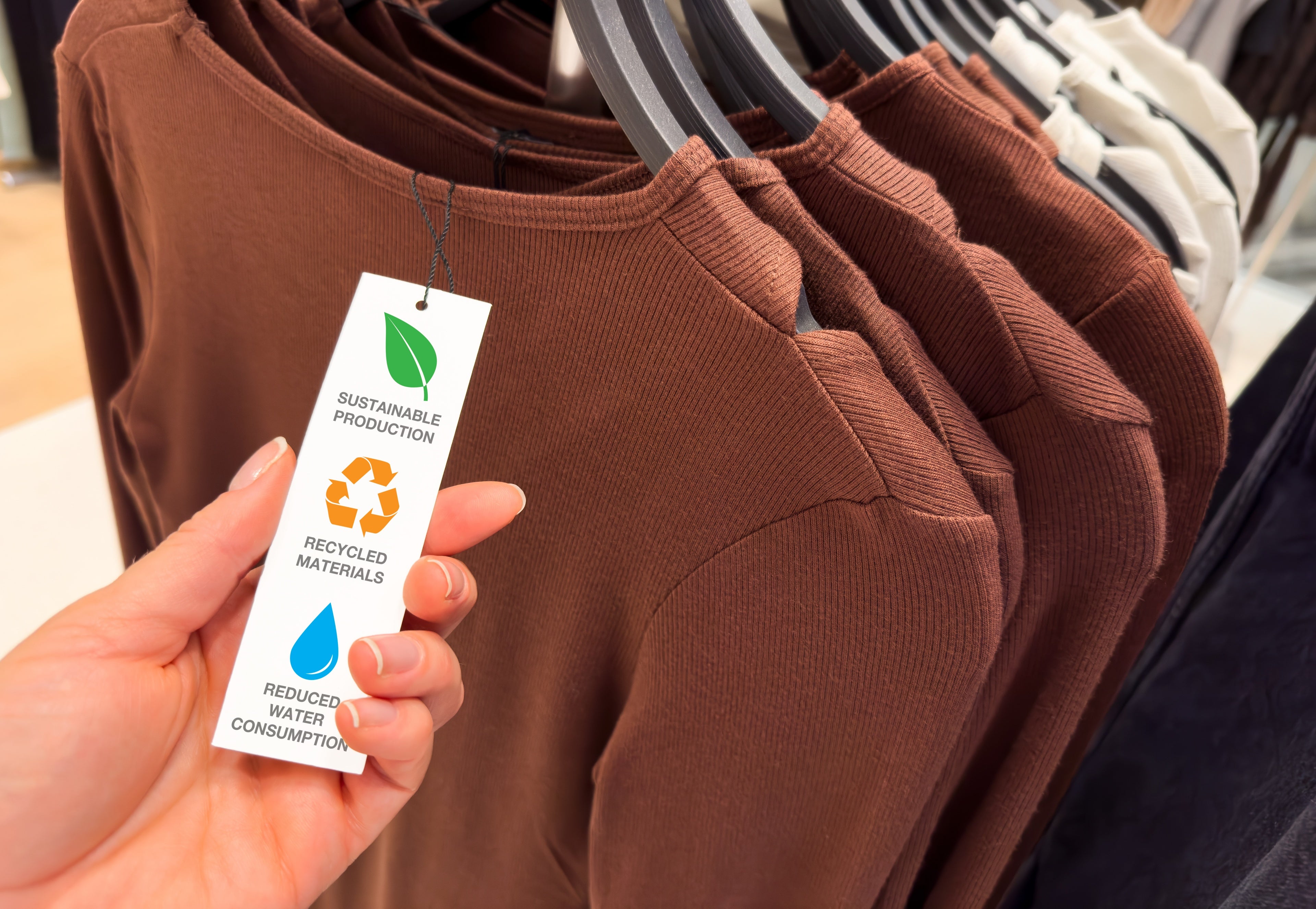Remain Ahead of the Curve by Discovering Cutting-edge Style Fads
In an industry as dynamic as style, staying ahead includes greater than simply adhering to existing patterns-- it requires an exploration of technology. Smart fabrics, for example, are transforming garments right into functional masterpieces, while 3D printing is revolutionizing layout processes with its personalized, waste-reducing capacities. As sustainability ends up being a keystone, developments like environmentally friendly materials and round fashion techniques are improving environmental responsibility - Cape Town Sustainable Fashion. Furthermore, the convergence of modern technology and fashion advertises a new period of consumer engagement. Just how, then, can these emerging patterns redefine the future of fashion, and what implications do they hold for brands seeking to grow in this developing landscape?

Welcoming Smart Textiles
Over the last few years, the fashion business has actually seen a transformative change with the assimilation of clever fabrics, a sophisticated advancement that mixes innovation with fabric. This advancement represents not just a blend of aesthetics and performance however also a considerable jump towards sustainability and customization in fashion. Smart textiles, also understood as e-textiles, installed innovative electronics such as sensing units and conductive threads within the fabric, enabling garments to communicate with the wearer or the atmosphere.
These fabrics are designed to monitor physiological criteria, such as heart price or body temperature level, offering real-time health and wellness analytics. Beyond wellness applications, smart textiles are also being used for flexible clothes, which can transform color or pattern in response to environmental stimuli, hence offering a vibrant style experience.
Additionally, the advancement of energy-harvesting textiles that produce power from motion or sunlight is leading the way for self-dependent wearable technology. This development is appealing to eco mindful customers and developers intending to minimize the ecological impact of fashion. As research and growth in this field advance, smart textiles are expected to end up being significantly prevalent, improving the landscape of modern-day fashion with their multifunctional abilities.
The Surge of 3D Printing
Reinventing the manufacturing landscape, 3D printing has actually arised as a game-changer in the apparel industry. This innovative innovation has actually made it possible for designers to press the boundaries of creativity, creating intricate and customized garments that were formerly inconceivable. By leveraging electronic style and additive manufacturing, 3D printing assists in the development of complicated geometries and patterns, enabling developers to experiment with brand-new textures and structures.
A noteworthy advantage of 3D printing in vogue is its capability to produce on-demand, decreasing waste and decreasing stock requirements. This efficiency not only enhances manufacturing procedures however additionally allows for rapid prototyping, enabling developers to bring their visions to life in a much shorter timeframe. In addition, 3D printing sustains modification somewhat unparalleled by traditional approaches, offering customized fits and distinct designs customized to individual consumer preferences.
The increase of 3D printing has additionally equalized style, making it easily accessible to emerging designers who can currently produce top notch items without significant monetary investment in typical manufacturing framework. As innovation proceeds to development, the garment industry is positioned to harness the complete possibility of 3D printing, exploring new materials and strategies that will unquestionably redefine exactly how style is conceived and produced.
Sustainable Style Innovations
As the fashion sector faces the pushing demand for environmental responsibility, lasting fashion developments have arised at the forefront of transformative modification. The growing understanding of eco-friendly impact has sustained a change towards more eco-conscious techniques and materials. Brands and developers are currently focusing on sustainability, incorporating methods that lessen waste and reduce carbon footprints.
One substantial development is the rise of circular style, which emphasizes recycling and upcycling to extend the lifecycle of garments. This approach not only decreases waste however additionally encourages customers to adopt a more conscious technique to garments intake. Additionally, the usage of sustainable materials, such as natural cotton, hemp, and recycled polyester, has obtained traction. These materials need much less water and energy during manufacturing, considerably lessening ecological effect.
Another advancement depends on the fostering of ingenious dyeing methods that use waterless procedures or natural dyes, therefore lowering the large amounts of water and chemicals commonly made use of in fabric dyeing. Moreover, advancements in biotechnology have led to the development of lab-grown natural leather and textiles, supplying cruelty-free and eco-friendly options to standard materials. With these pioneering efforts, the fashion industry is making significant strides in the direction of a much more sustainable future.

Tech-Integrated Clothing
Tech-integrated apparel stands for a revolutionary fusion of fashion and innovation, improving just how individuals connect with their clothes. This innovative domain is noted by the inclusion of clever textiles and ingrained digital components, boosting both functionality and visual appeal. From physical fitness trackers installed in sportswear to warmed jackets managed using smartphone applications, tech-integrated garments offers consumers extraordinary ease and adaptability.
Introducing brands are driving this trend, concentrating on creating garments that react to environmental stimuli or individual commands. click to read For example, some garments can change color or pattern in reaction to temperature level shifts, while others incorporate biometric sensors to monitor wellness metrics like heart price or stress and anxiety levels. The smooth combination of modern technology into textiles likewise reaches ecological sustainability, with efforts to develop self-cleaning textiles or garments that adapt to weather, thus minimizing the demand for numerous layers.
Additionally, the introduction of wearable technology is not simply restricted to garments yet reaches devices like watches and eyeglasses, further widening the range of tech-integrated fashion. As the sector remains to innovate, the possibility for customization and personalization in apparel expands, supplying consumers one-of-a-kind, tech-enhanced style experiences that deal with their specific needs and my explanation choices.
Future of Virtual Style
In recent times, the future of virtual style has become a transformative force within the industry, leveraging advancements in electronic innovation to redefine just how fashion is developed, experienced, and taken in. By incorporating enhanced fact (AR), digital reality (VIRTUAL REALITY), and 3D design tools, developers can now craft interactive and immersive experiences that transcend typical style borders. Online style allows for the development of garments that exist solely in digital atmospheres, offering endless possibilities for innovation without the limitations of physical production.
This electronic change not only provides possibilities for creative expression however additionally addresses sustainability concerns integral in traditional fashion methods. Cape Town Sustainable Fashion. By removing the need for physical resources, online style reduces waste and reduces carbon impacts. In addition, the rise of virtual fashion lines up with the boosting customer need for distinct and tailored experiences, as online garments can be personalized and customized to specific choices effortlessly

Conclusion
The fashion business's future depend on the assimilation of ingenious technologies and lasting methods - Cape Town Sustainable Fashion. Smart fabrics and tech-integrated garments are enhancing performance, while 3D printing offers possibilities for personalization and waste decrease. Sustainable fashion, with circular strategies and eco-friendly materials, demonstrates a dedication to environmental stewardship. Moreover, virtual fashion is positioned to redefine consumer interactions. Adjusting to these fads is necessary for brand names seeking to stay pertinent and affordable in this rapidly progressing landscape.
In current years, the style industry has observed a transformative shift with the integration of wise fabrics, a cutting-edge development that blends innovation with textile.As the style sector grapples with the pushing need for environmental obligation, sustainable fashion advancements have actually arised at the center of transformative adjustment.In current years, the future of digital style has actually arised as a transformative pressure within the sector, leveraging innovations in electronic modern technology to redefine just how fashion is created, experienced, and eaten. The rise of digital style straightens with the raising customer need for individualized and unique experiences, as online garments can be personalized and tailored to individual choices with convenience.
The style industry's future lies in the integration of sustainable practices and cutting-edge modern technologies.